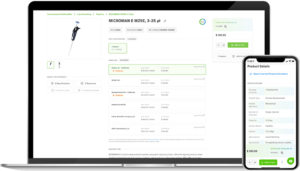7 Key Elements to Building a Biotech Fundraising Deck

Almost every investor you meet will ask for a pitch deck, and it is quite likely that you will speak to and present on one at each pitch meeting. But what should go into a pitch deck? We put together this guide with all the essential slides you need to make a great pitch deck.
One liner
Start with a simple one liner on what your company does in as basic terms as possible. Being able to explain something complex in simple, straightforward terms shows true understanding. Doing so also helps to give the investor all the necessary context from the start. If you start off by going too far into setting the stage and setting the context, the investor may get lost in those rabbit holes of thought before they can even understand what you are building.
Why now
A great idea at the wrong time still makes for a bad investment. Investors have 7-10 year time horizons with their fund, so while they do not have urgent timing, realizing returns during a limited window is crucial to the success of their fund. Explain to investors why now is the best time to build your company. How do the technology, regulatory, social, and culture trends come together to create the optimal tailwinds for you?
Market opportunity
How many people or companies are you ultimately selling to? How much are these people willing to pay for your product? By articulating the size of the market you are going after, you paint a more quantitative picture of your monetization potential and ability to build a true revenue generating business.
Impact
Tell a story about someone whose life is or will be transformed by your technology. Show their photo and state their name. Statistics are valuable, but ultimately people connect much more with stories.
Paint the picture of what the world would look like if you succeeded. Dream big and be as bullish as you can. This is your opportunity to get investors excited about and bought into your big vision.
Differentiation
Who else is a player in your market? While you may be unique, someone else must be doing something similar or adjacent. Articulate to investors, preferably through a quadrant graph, how you stand out from the competition and who your competition is so they can better understand your landscape. What is your unique insight? How did you arrive at it? How do you continue to hone your superpower and transform it into a lasting moat?
Team
Many early stage companies pivot in their journey to finding product market fit. Investors know and even expect this, so much more than the idea itself, investors are betting on the team. Articulate why you are the best people to tackle this problem. Show your founder market fit.
Plan
Be clear about your next steps. How much are you raising? On what terms? Where are the funds raised going to? How is your product roadmap shaped by the fundraise?
Appendix
Beyond the core slides above, keep most of the other slides and information you would want to share to the Appendix so that the presentation slides clean, sharp, and to the point. Include backups slides on the financials and technology platform, in case particular investors want to dive in further on these fronts.
. . .
We hope this guide was helpful for you in putting together a great pitch deck for your next institutional fundraise! We put together an eBook for biotech founders on taking their company from zero to one. Check it out here.


